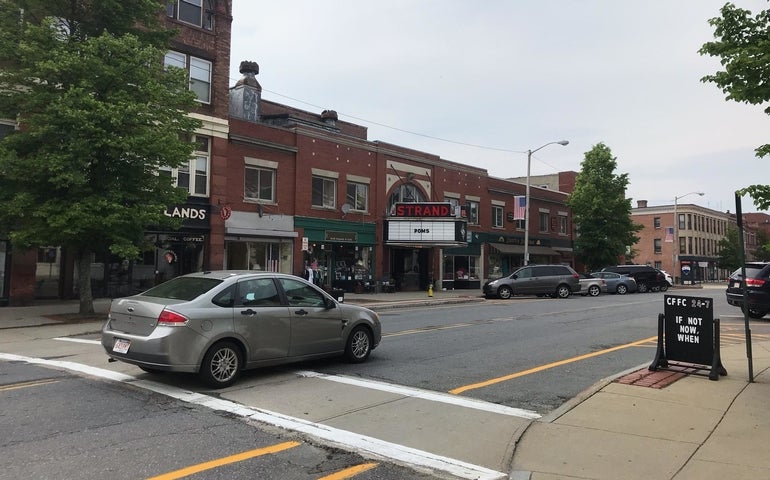Clinton turns focus to downtown
 Photo | Grant Welker
High Street in downtown Clinton
Photo | Grant Welker
High Street in downtown Clinton
Clinton voters have approved a $4.5-million downtown infrastructure improvement plan and a zoning initiative meant to fill more upper floors of the neighborhood’s buildings with residents.
With two Town Meeting votes June 3, Clinton voters jump-started a major downtown renovation and made it easier for property owners and developers to win approval for new residential units.
Improving downtown has long been a priority of the Board of Selectmen, said Michael Dziokonski, who chairs the board. The neighborhood's days of hosting multiple shoe stores or dress shops won't be coming back, he said, but there are opportunities for more restaurants, coffee shops and niche stores.
"It's one of the things that people have always talked about," Dziokonski said of taking better advantage of downtown's attributes.
The infrastructure improvements will include a complete rebuilding of the main downtown corridor, High Street, and the addition of 55 decorative street lights, intersection improvements, improve signage, new street furnishings and landscaping, and sidewalks that meet accessibility requirements.
A stretch of High Street between Union and Water streets, and Church Street between School and Walnut streets will be included in the scope of that work.
That work will be most visible to residents and visitors, but a new zoning bylaw is meant to bring more people living in the neighborhood, bringing the town more tax revenue and more people to eat and shop downtown.
“We’re trying to create a path to investment that will allow owners and investments to feel more secure in realizing a gain on their investment,” said Phil Duffy, Clinton’s director of community and economic development.
The new mixed-use bylaw allows for the conversion of existing buildings and construction of new buildings with first-floor commercial uses and upper-floor residential use. New residential uses will no longer necessarily be required to come with a certain number of parking spots or living units a certain size that made adaptive uses sometimes prohibitive.
“We’re trying to prioritize investments,” Duffy said of the new bylaw, describing it as a straightforward move to make new development easier. “This isn’t a transformative venture. We’re trying to be a better version of Clinton.”
Town Meeting also approved a measure allowing the town to eventually seek proposals from developers for the former Rockbestos site on Sterling Street. The eight-acre long-vacant contaminated site, where a mill complex was demolished more than a decade ago, was approved in May for $76,000 in state funding to help clean the property.
Two other new zoning bylaws were also approved. One gives builders standards to follow for designing multi-family housing to ensure projects fit into their neighborhoods and are attractive aesthetically, and another supports historic preservation of large historic homes by allowing conversion from single-family use to multi-family if a special permit is granted.
Clinton officials have been working to lure investment from developers through a federal tax incentive program called opportunity zones targeting relatively economically challenged neighborhoods. Two such zones — each its own Census tract — cover downtown Clinton, with a combined roughly 6,000 residents.









0 Comments